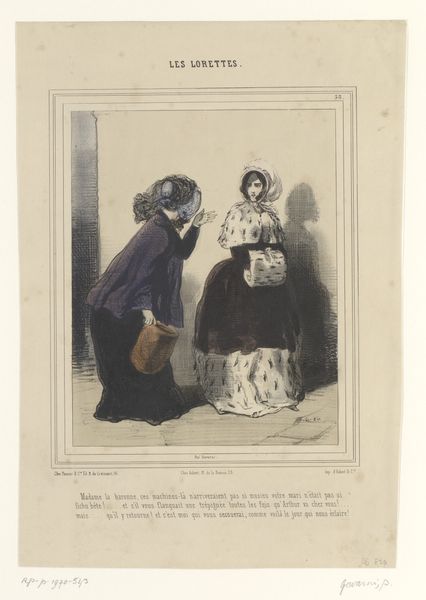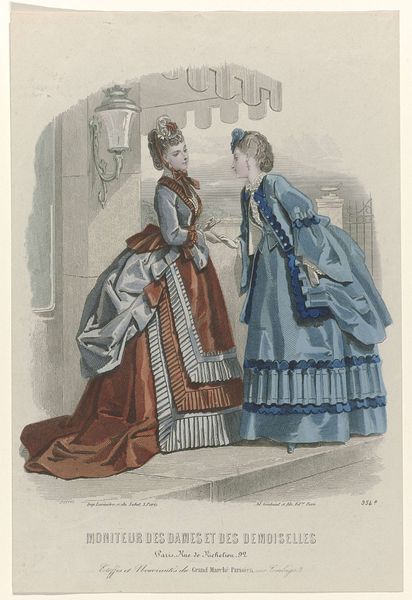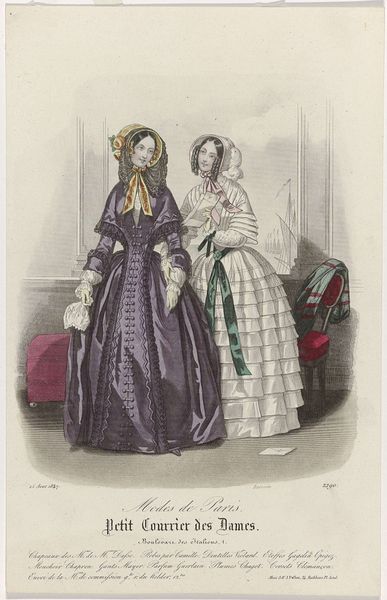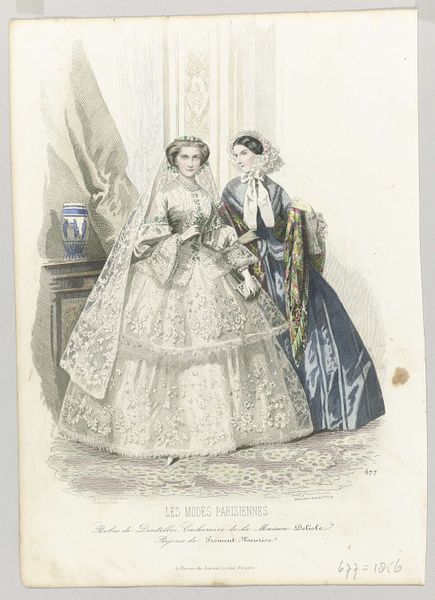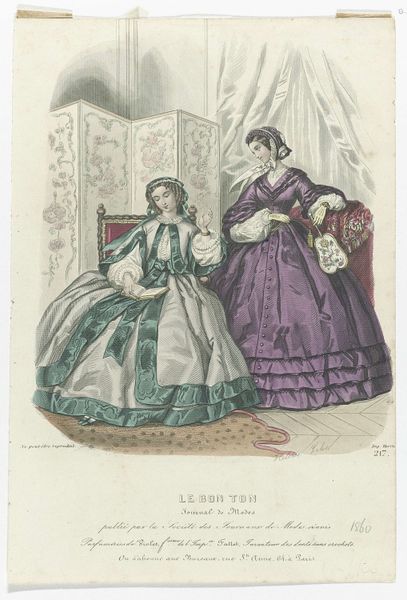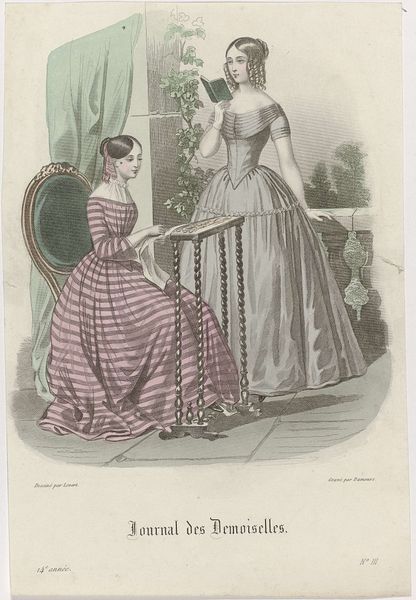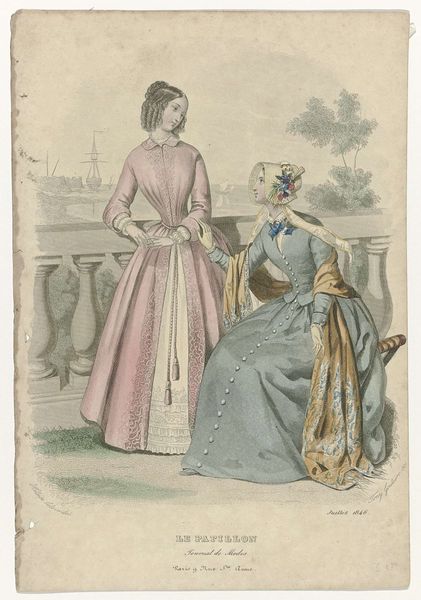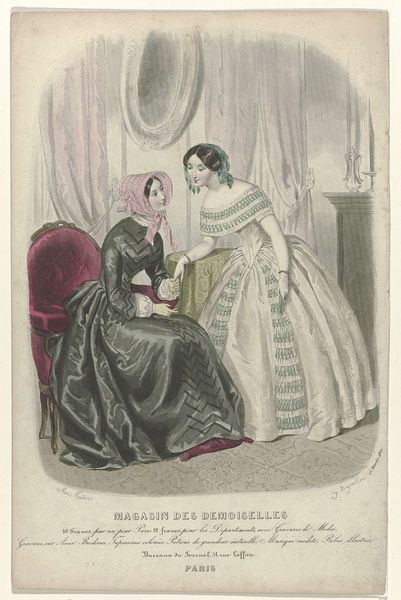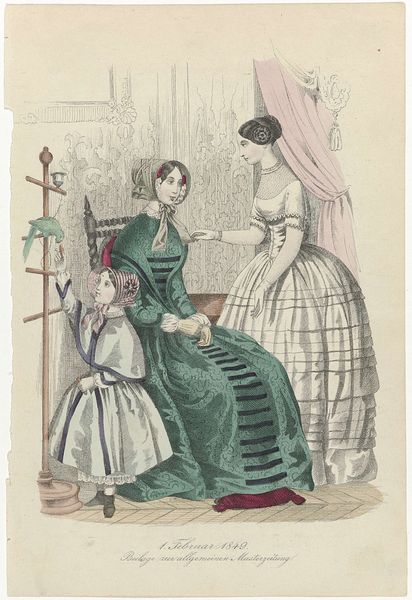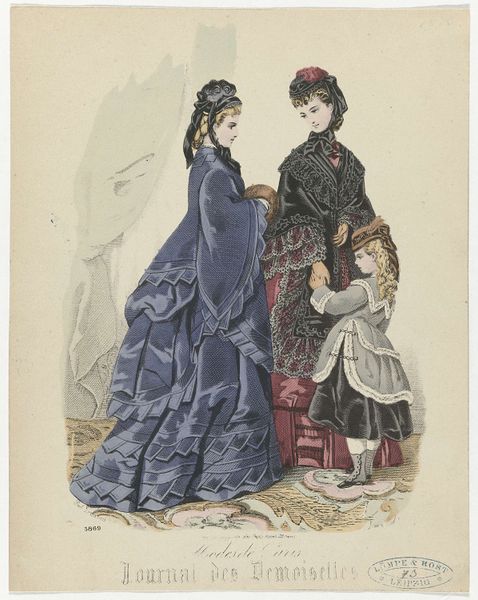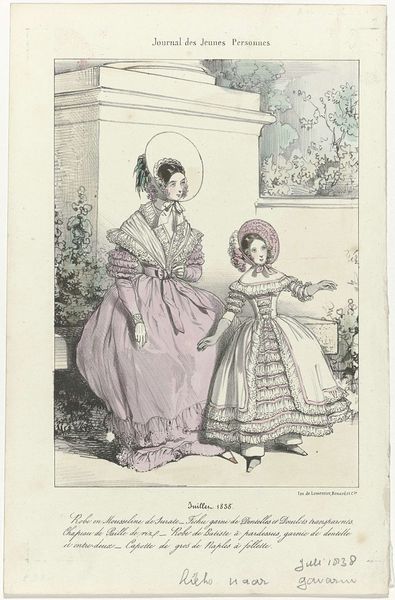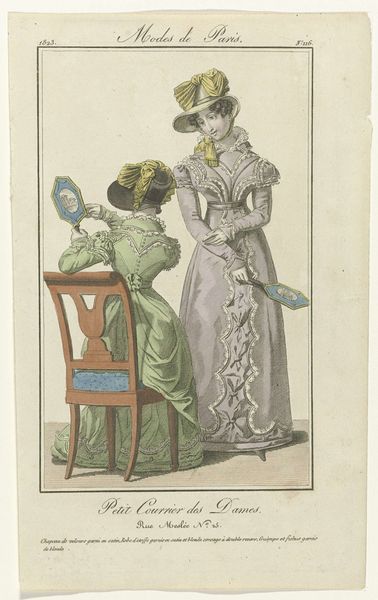
Allgemeinen Musterzeitung, Beilage zur allgemeinen Musterzeitung, 1 april 1855 1855
0:00
0:00
Dimensions: height 219 mm, width 148 mm
Copyright: Rijks Museum: Open Domain
Curator: Let's consider this print, "Allgemeinen Musterzeitung, Beilage zur allgemeinen Musterzeitung, 1 april 1855," which translates to something like 'General Pattern Newspaper, Supplement to the General Pattern Newspaper, April 1st, 1855.' Editor: Immediately, the clothing screams mid-19th century. There’s something somber about it too, despite the elegant fashions. It makes me think about social restrictions and the expectations placed upon women at the time. Curator: Absolutely. These types of fashion plates were prevalent; essentially distributed to dressmakers or potential customers to keep up with the latest styles and fabrics. Note the detail in the engraving of the layered fabrics, the puffed sleeves. One could trace the labor back to textile mills, dye production, pattern-making… it all represents a complex system of production and consumption. Editor: Precisely! We’re looking at more than just aesthetics. Who was being marketed to, who had the resources to acquire such clothing, and what messages were these styles conveying about status and conformity? The central figure’s gown and the nun’s habit speak to divergent roles society deemed acceptable for women: marriage, piety, seclusion... The composition itself directs our attention towards how constrained each figure is, caught in her designated orbit. Curator: It’s a fascinating convergence. Genre-painting blended with commercial pattern illustration. We can investigate the standardization and industrialization occurring through printing. Examining these prints reveals networks of workshops. These objects speak not only to consumer culture, but also illustrate the infrastructure surrounding fashion. Editor: And how deeply it permeated lives! These patterns and ideals dictated movement, self-expression… This plate is a document of social performance—the carefully constructed identity being presented. Think of how confining those silhouettes are physically and metaphorically. What narratives are missed as a result of it all? Curator: In essence, scrutinizing material culture leads into discussions about production, societal roles and the commodification of aspiration, captured here on a mass-produced paper. Editor: A tiny lens through which we see power dynamics subtly imposed in day to day. The very constraints become evidence, speaking loudly across history.
Comments
No comments
Be the first to comment and join the conversation on the ultimate creative platform.
